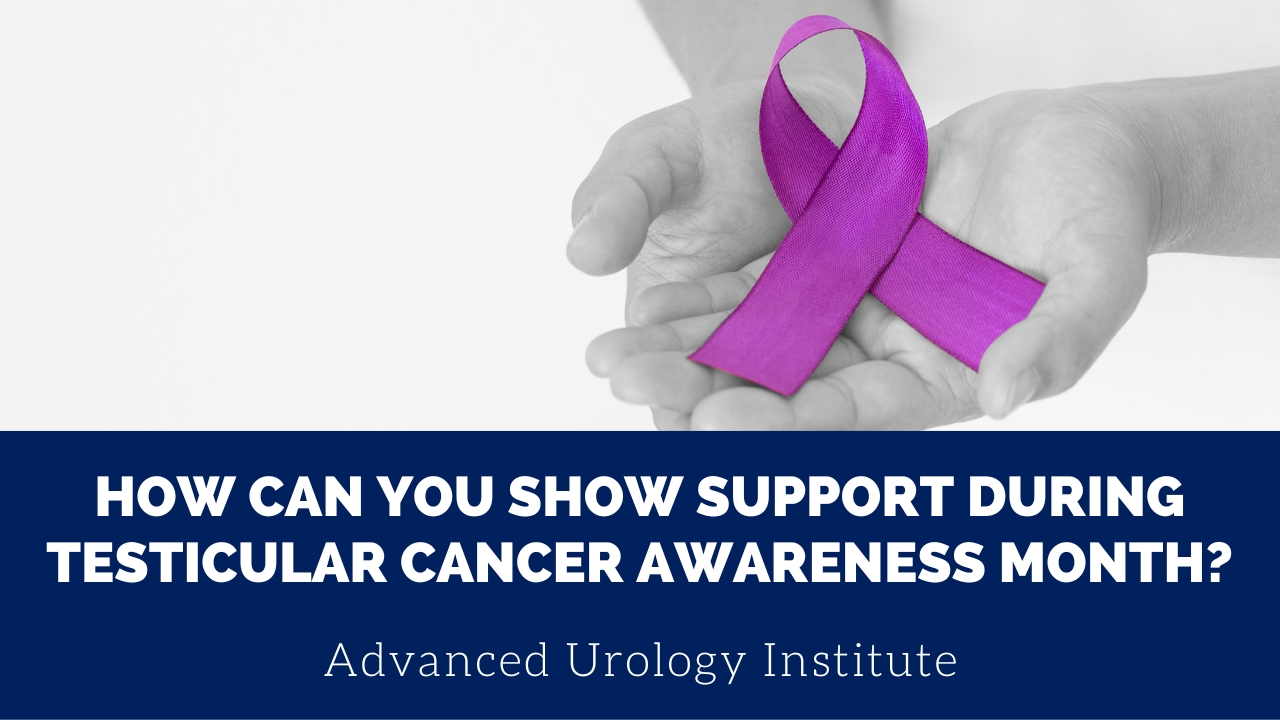Key Takeaways:
- Familial history, age (15-35), and race (Caucasian) are the most common risk factors for developing testicular cancer.
- Exposure to certain chemicals and a family or personal history of testicular cancer are less controllable risk factors for testicular cancer.
- Early detection is the key to successful treatment, so it is important for men to familiarize themselves with the risk factors and warning signs of testicular cancer.
 When most people hear the term “testicular cancer,” they often think that it must be a very uncommon type of cancer. While the diagnosis of testicular cancer is less common than most other forms of cancer, it is incredibly important for men to be aware of their risk of developing the condition and the potential signs and symptoms. In this article, we will explore the risk factors of testicular cancer and how men can reduce the risk of developing this cancer.
When most people hear the term “testicular cancer,” they often think that it must be a very uncommon type of cancer. While the diagnosis of testicular cancer is less common than most other forms of cancer, it is incredibly important for men to be aware of their risk of developing the condition and the potential signs and symptoms. In this article, we will explore the risk factors of testicular cancer and how men can reduce the risk of developing this cancer.
Testicular cancer is a form of cancer that targets the male reproductive organs. Specifically, the cancer begins in the cells of one or both testicles, which are located inside the scrotum. It is estimated that more than 9,000 cases of testicular cancer are diagnosed yearly in the United States, with this number rising as awareness of the disease increases. Advanced stages of the cancer can spread to other parts of the body, including the lymph nodes and other organs. It is highly important for men to familiarize themselves with the risk factors of testicular cancer and the preventative measures they can take to protect against developing the condition.
Common Risk Factors
There are a number of factors that can increase a man’s risk for developing testicular cancer. The most common risk factor is genetic, meaning that a man has a higher risk of developing testicular cancer if a close family member (father or brother) has been diagnosed with the condition. Abnormal testicle development, such as Undescended Testes (UDT), can also increase the risk. Furthermore, injuries to the scrotum such as a bruise, twist, or break can also increase the risk of testicular cancer.
Less Common Risk Factors
The development of testicular cancer is most common in men aged 15-35, and there is a higher risk of developing testicular cancer if the individual is Caucasian rather than African American or Hispanic. Additionally, studies have shown a positive correlation between higher body weight and an increased risk of testicular cancer.
Uncontrollable Risk Factors
In addition to the risk factors outlined above, individuals with a family or personal history of testicular cancer, or those exposed to certain chemicals such as pesticides, may also have a higher risk of developing testicular cancer.
Conclusion
Overall, there are several factors that can significantly increase a man’s risk of developing testicular cancer. Understanding these risk factors is the first step to proactively reducing the risk of developing testicular cancer. The most common risk factor is genetic, so it is important for those with a family history of the condition to be particularly aware of the warning signs and symptoms. Furthermore, individuals who fall into the same age and race categories (15-35 and Caucasian, respectively) should be especially cautious. Individuals should also be aware of risk factors that are outside of their control, such as family history of the condition and exposure to certain chemicals.
In conclusion, testicular cancer is highly treatable but only if it is caught early. Early diagnosis is vital to successful treatment, so it is important that men become familiar with the risk factors associated with testicular cancer, as well as with the signs and symptoms to look out for. If you are in the Florida area and have questions about testicular cancer or urology in general, Advanced Urology Institute is the largest urology practice in Florida. Their team of experienced providers and staff provide comprehensive, cutting-edge care for urologic issues and can help answer any questions you may have.
REFERENCES:
- “Testicular Cancer: Risk Factors.” https://www.cancer.net/cancer-types/testicular-cancer/risk-factors.
- “What Is Testicular Cancer? | Types of Testicular Cancer.” 17 May. 2018, https://www.cancer.org/cancer/testicular-cancer/about/what-is-testicular-cancer.html.
- “Testicular Cancer: Symptoms, Diagnosis & Treatment.” https://www.urologyhealth.org/urology-a-z/t/testicular-cancer.



